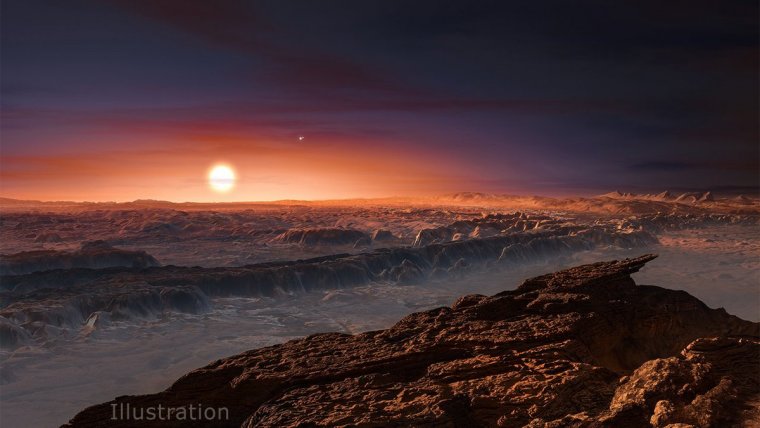| News / Space News |
ESO Discovers Earth-Size Planet in Habitable Zone of Nearest Star
NASA | AUGUST 28, 2016
A newly discovered, roughly Earth-sized planet orbiting our nearest neighboring star might be habitable, according to a team of astronomers using the European Southern Observatory's 3.6-meter telescope at La Silla, Chile.

This artist's impression shows a view of the surface of the planet Proxima b orbiting the red dwarf star Proxima Centauri, the closest star to the solar system. The double star Alpha Centauri AB also appears in the image. ![]()
The exoplanet is at a distance from its star that allows temperatures mild enough for liquid water to pool on its surface.
The new planet circles Proxima Centauri, the smallest member of a triple star system known to science fiction fans everywhere as Alpha Centauri. Just over 4 light-years away, Proxima is the closest star to Earth, besides our own sun.
The science team that made the discovery determined that the new planet, dubbed Proxima b, is at least 1.3 times the mass of Earth. It orbits its star far more closely than Mercury orbits our sun, taking only 11 days to complete a single orbit -- a "year" on Proxima b.
The stunning announcement comes with plenty of caveats. While the new planet lies within its star's "habitable zone" -- a distance at which temperatures are right for liquid water -- scientists do not yet know if the planet has an atmosphere.
It also orbits a red-dwarf star, far smaller and cooler than our sun. The planet likely presents only one face to its star, as the moon does to Earth, instead of rotating through our familiar days and nights. And Proxima b could be subject to potentially life-extinguishing stellar flares.
Another possible inspiration Proxima b could reignite: the admittedly far-off goal of sending a probe to another solar system.
YOU MAY ALSO LIKE


